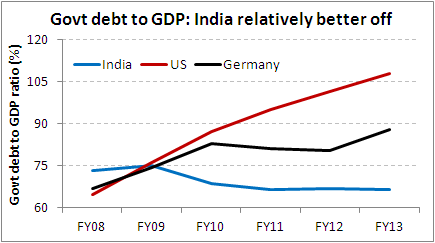BIOCON Biopharmaceuticals Pvt. Ltd vs. ITO (ITAT Bangalore)
The assessee entered into a Joint Venture agreement with CIMAB SA, Cuba, to set up a JVC in India. It was agreed that CIMAB would provide technology to the JVC in consideration for which it would be allotted 49% of the equity capital of the JVC. The assessee filed an application u/s 195(2) claiming that the technology was not chargeable to tax in India and that the shares should be permitted to be allotted without TDS. The AO passed an order u/s 195(2) in which he accepted the assessee’s contention that no TDS was required to be deducted on the allotment of shares. However, later the AO took the view that the allotment of shares in consideration of the technology transfer was chargeable to tax and that the assessee was in default u/s 195 & 201. This was upheld by the CIT(A). Before the Tribunal the following issues arose: (i) whether u/s 195(2) the AO has the jurisdiction to issue a certificate that no tax need be deducted at source, (ii) whether s. 195(1) applies where payment is made in kind and not in money terms & (iii) whether the consideration (in the form of shares) for technology transfer can be said to be “transfer of a capital asset” outside India so as to be exempt from tax? HELD by the Tribunal:
(i) S. 195(2) presupposes that the person responsible for making the payment to a non-resident is in no doubt that tax is payable in respect of the some part of the amount to be remitted to a non-resident, but is not sure as to what should be portion so taxable or is not sure as to the amount of tax to be deducted. Consequently, in an application made u/s 195(2), the AO cannot assume jurisdiction to hold that the entire payment is not chargeable to tax and the payer need not deduct tax at source. As the AO had no power u/s 195(2) to hold that no tax is deductible at source, the order passed by him holding that no tax is deductible at source on the technology transfers is non est in law. As there is no estoppel against the law, the assessee cannot take advantage of such an order (GE India Technology Centre 327 ITR 456 (SC) referred)
(ii) The argument that s. 195(1) does not apply to a case where shares are allotted is not acceptable because the expression “any other sum chargeable under the provisions of the Act” in s. 195(1) has to be read in conjunction with the words “at the time of credit of such income …. in cash … or by any other mode”. Thus payment in terms of the money is not the only mode contemplated u/s 195(1) of the Act. The use of the expression “or by any other mode” makes the intention of the legislature clear that s. 195(1) applies even to cases where payment is made otherwise than by money.
(iii) The definition of “royalty” in Explanation 2 to s. 9(1)(vi) excludes consideration which would be income of the recipient chargeable under the head ‘capital gains’. For application of the above exclusion clause, it is necessary that (a) technical know-how should be a capital asset in the hands of CIMAB, (b) the said technical know-how should be capable of being transferred and should have been transferred by CIMAB, (c) the machinery provisions viz., the computation of capital gain as given in s. 48 should be capable of being applied & (d) the transfer of technical know-how should have taken place outside India. On facts, the assessee has not shown that the transfer of technical know-how took place outside India. Further, the terms make it clear that there was no transfer of the know-how by CIMAB to the assessee but the assessee had a mere right to use the know-how, though the nomenclature used in the Agreement is ‘transfer of technology’. Consequently, the consideration for the know-how constitutes “Royalty” under Explanation 2(iv) to s. 9(1)(vi).



